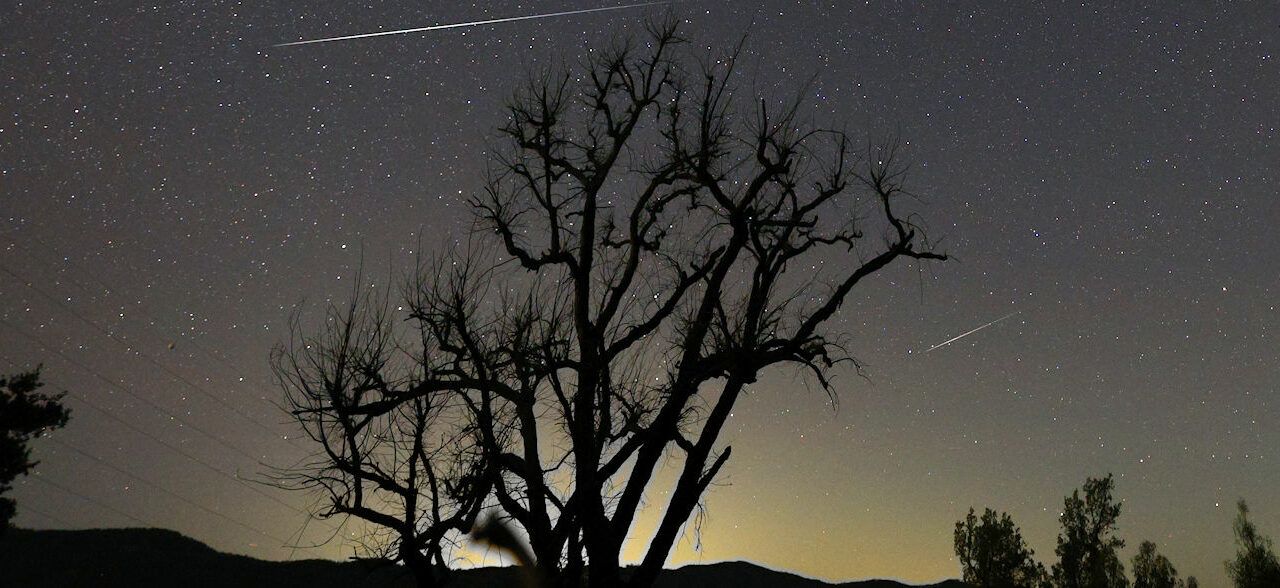Jaap van ‘t Leven & Koen Miskotte
Introduction.
Geminids: one of the most beautiful meteor showers to observe. But also, a difficult one: the chance of a clear sky in December in the Netherlands is less than 10%. But the southern locations in Europe are certainly also no guarantee of success either. For Koen, it also became apparent in September (due to suddenly imposed holidays by the company where he works), that he had no more days off. So, in September Koen had already resigned himself to the fact that it would be a Dutch campaign with a small chance of success.
In October Jaap booked a house near Monchique in the Algarve. More precisely, near the very small village of Umbria. The goal was to be in the region where the occultation of the star Betelgeuse by asteroid 319 Leona on December 12, 2023 at 1:12 UT would occur. This asteroid would cover the red star for a maximum of 11 seconds. According to predictions, Betelgeuse would disappear completely for a brief time, other sources spoke of a decrease in brightness of up to 3 magnitudes. In addition, Jaap planned to observe the Geminids as well, which would have their maximum on the night of December 14/15.
At the end of November, it turned out that Koen had worked so many hours extra that he could take a whole week off. And luckily the boss agreed. The weather predictions have been looked at a bit, but at the end of November they were still not sure: it could still go either way. This had to do with the position of a high-pressure area located off the Portuguese coast, or a little further away in the west or just above the Iberian Peninsula. On Tuesday, December 5, Koen booked the same flight as Jaap’s, to and from Faro. Outbound flight December 9, return flight December 16, good for a week of counting Geminids if the weather permits!
Equipment
To cover the Betelgeuse occultation, Jaap brought a Watec 902H2 video camera with a 12mm Pentax lens. Combined with a GPS and a so-called time inserter, each individual video frame is given a text with accurate location and time data. This video image is then saved on a laptop. By combining observations with similar equipment, all kinds of information can be gathered, the shape and size of the asteroid, the shape and size of Betelgeuse and its atmosphere, etc. For the overview, a Canon EOS R6ii camera with a 50mm lens would also be running in movie mode.
For the Geminids, we relied on Canon EOS R and R6ii cameras with Sigma 14 and 24mm lenses.
Our observations
On Saturday afternoon we left from Schiphol Airport after a half hour delay. The take-off seemed to proceed normally until after half an hour we clearly noticed that the plane was turning. At the same time, the captain of the flight reports that damage occurred to one of the cockpit windows during take-off and that, just to be on the safe side, they are flying back to see if they can continue flying to Faro. After returning to Schiphol Airport, it turned out that it was not possible to continue flying, but fortunately a new Transavia plane was ready. We arrived in Faro at 21 UT after a bumpy flight and a very hard landing. We got our luggage quickly and the rental car arrived quickly. It is 0:00 UT when we arrive at the rented house.
There are clear skies but there is also some fog. Yet we see that the starry sky looks great. The weather predictions indicate that we will probably miss the Betelgeuse occultation, but there is hope for the Geminids.
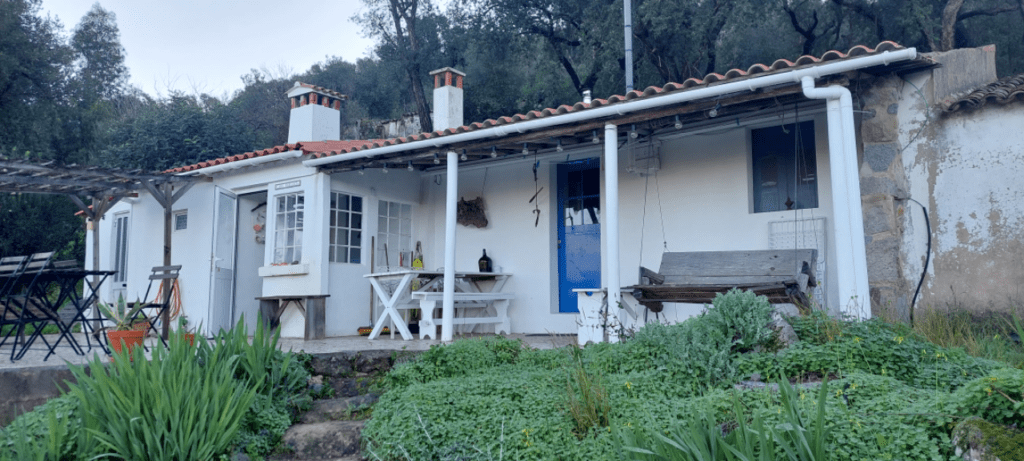
Figure 1. Our rented house as seen from the garden.
During the day of December 10, we looked for a suitable place for the visual observations and the cameras. Since there are no other observers in Southern Portugal there will be no simultaneously photographic actions. It is now all about the beautiful pictures. A bit of a problem are the numerous cork oaks around the house. But it also gives nice opportunities. In front of our house, which is located on a slope facing north, there is a dead cork oak without leaves. It really contrasts beautifully with the starry sky! This could well become the most photographed tree in Portugal!
During the day, an extremely bright security lamp that illuminated the entire garden is rendered “harmless” with some tape and plastic around the sensor. Other outdoor lighting can be turned off with a switch inside. Due to the large number of cork oaks, it was not possible to look at the starry sky undisturbed from the garden. The view south and east was also largely blocked by the hill and trees. After some searching in the area, it was decided to observe on the street. It is a dead-end asphalt road that lies underneath our house with one more house at the end. So, no traffic is expected, with the exception of the residents of that house. The view there is perfect towards the north. But there is also a lighting problem here. There is a rechargeable (solar) streetlight mounted on the tree. On a cloudy day it usually turns off after two hours, but on a sunny day it usually takes three or four hours. The solution to this is an observation location next to the house. But there is more obstruction in Koen’s FOV for about 10%. So as soon as the streetlight shuts down, Koen moves to the street.
December 10/11, 2023
This night will be clear. Koen first goes to sleep for a few hours, Jaap gets to work with a Watec 902H2 Ultimate with a 12 mm lens to test some things for the Betelgeuse occultation. Koen is aiming for a four-hour visual session, but this went so well without any fatigue that it ended up being six hours. The observations started at 22:40 UT. After one minute the first +3 Geminid is already seen. And while recording, meteor number 2 also appears! While flaring, a beautiful -6 Monocerotid (22:42 UT) moved down to the northwestern horizon! The Canon Ra with the 14 mm captured this fireball nicely. What a start to this campaign! The Geminids are also alive, loud and clear, the hourly counts are between 10 and 15. Smaller meteorshowers such as the Coma Berenicids, Monocerotids, and sigma Hydrids are also clearly active. In total, Koen counted 145 meteors during effectively 6 hours. See also table 1.

Table 1. Visual Geminid observations by Koen Miskotte
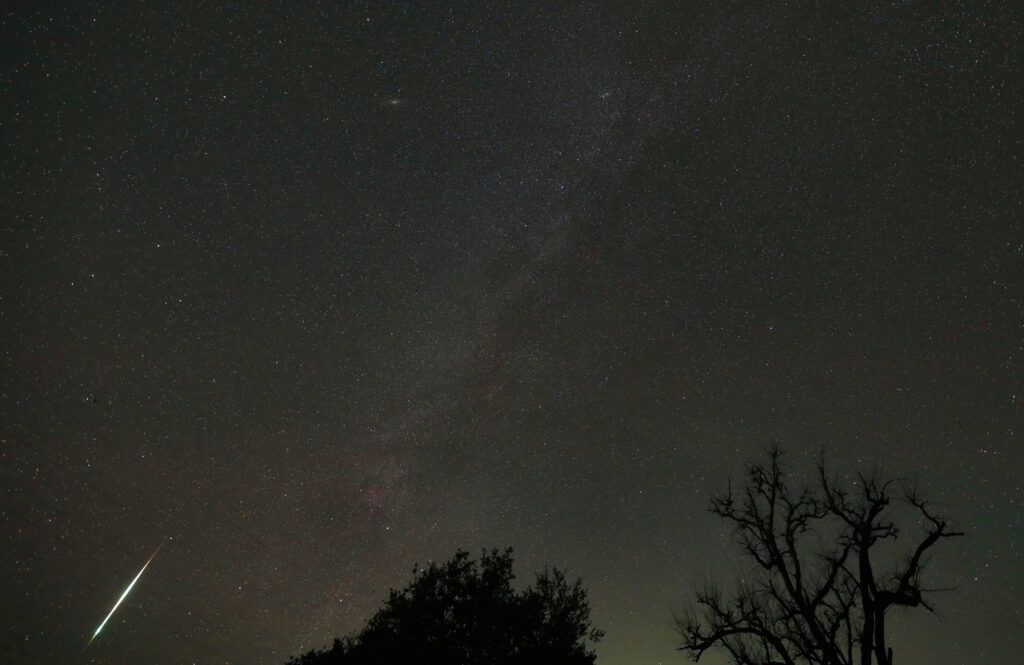
Figure 2. The spectacular Monocerotid of December 12, 2023, 22:42 UT. When zoomed in, many small flares are visible. Camera: Canon EOS Ra with a Sigma Art 14 mm at F 2.0, ISO 3200 and 6 seconds exposure time. © Jaap van ‘t Leven.
December 11/12, 2023
During the day of the December 11th, it turned out that observing the Betelgeuse occultation from the south-west of Portugal would be difficult. A lot of clouds and fog were forecasted with only a small chance of clear spells. Satellite images were continuously consulted during the evening and night, but the clouds and fog were very persistent. At one point the fog was so thick that it seemed to be raining. After the dense fog dissolved a bit, stars occasionally appeared in small clear parts of the sky, so we set up the equipment anyway. However, around the time of the occultation, no star was visible and so we packed up the equipment again. Fortunately, positive messages came from the east of Spain; there, many observers were able to observe the occultation under good conditions. From a first quick analysis, the predicted central line of the occultation appears to have been slightly further north than calculated.
December 12/13, 2023
During the day, Jaap is busy positioning his cameras. Because of the many trees it takes a bit of planning. Ultimately, one of his cameras ended up on a large pergola via a clamp with a ball head. And this camera would also produce the most beautiful photos. As predicted, December 12/13 was also cloudy. We use this night to catch up on some sleep so that we can go into the two marathon nights as fit as possible. We looked outside a few times, but it was always completely cloudy.
December 13/14,2023
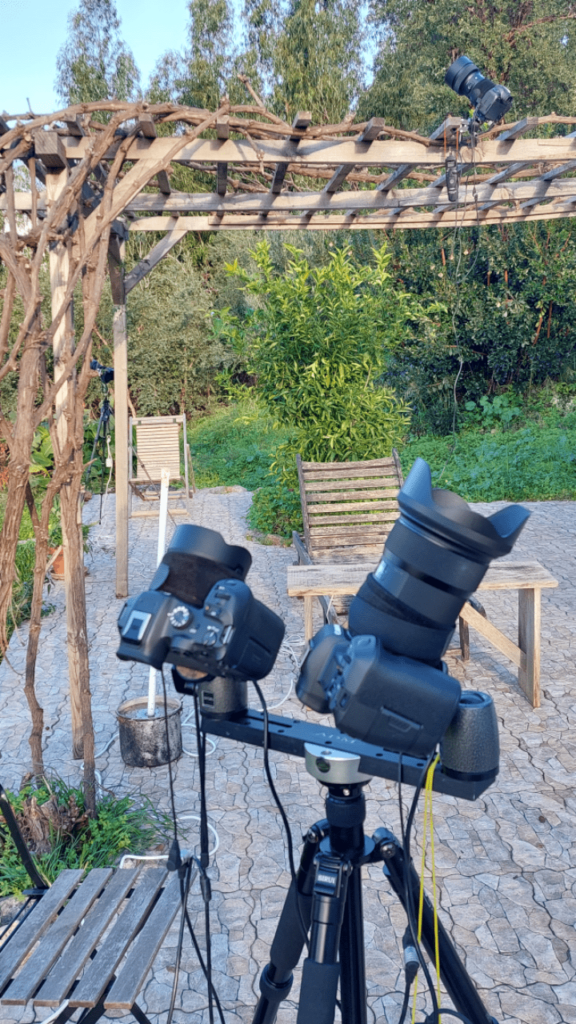
Figure 3. Find the cameras. Four of Jaap’s cameras ready for action!
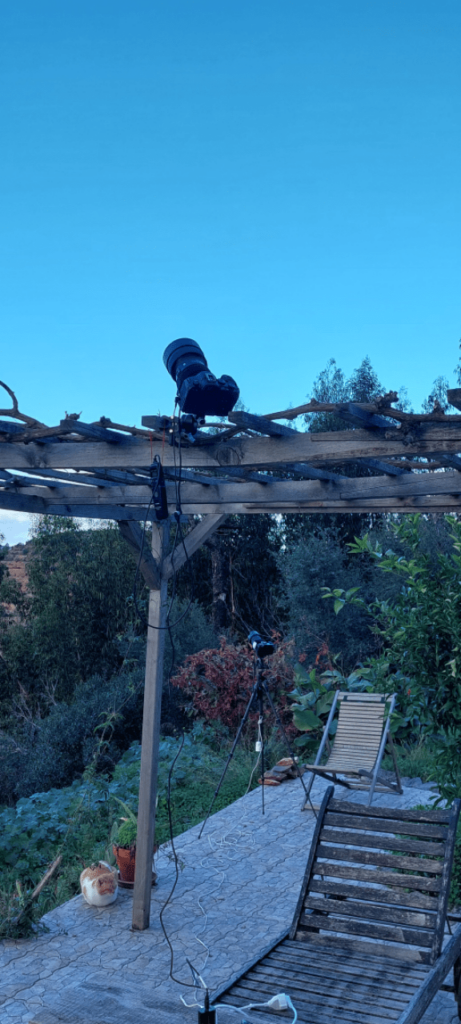
Figure 4. The beautiful, improvised setup of a Canon R6ii and the Sigma ART 14 mm lens on a sturdy pergola.
This setup produced the most beautiful pictures.
After a gray start, blue patches of sky soon became visible that day: the first clear spells arrived. However, it took until sunset before it became completely clear. During the day we did some shopping and went out for some dinner. That saved time, because , the days are also short here and the nights are very long in December. At dusk Jaap sets up his cameras and as soon as it gets dark, they are all open. The cameras all work on batteries that need to be changed every 2 to 3 hours. Because the maximum was not expected until the evening of December 14, Koen decides to sleep for another 2 hours after dinner. Wake up at 20 UT, have a coffee and then go outside! Expectations are not too high in terms of numbers and thinking of 2015 with Carl Johannink and Sietse Dijkstra in the Black Forest (southern Germany) when especially the first hours showed rather low activity. It was 20:37 UT when Koen signed in. The sky is perfectly clear (limiting magnitude 6.6), comparable to the first night of this action. During the night the sky would further improve, and the limiting magnitude increased to 6.7.
The Geminid activity? That really was not disappointing. With hourly counts ranging from 40 to well into the 90s, that is not bad at all. Minute counts of 4 or 5 are sometimes followed by a minute-long period with no Geminids. Regularly two appear at the same time, but there are also times with several in just a few seconds. As expected, few bright Geminids, especially the first few hours when only a few Geminids of 0 and -1 are seen. Koen is occasionally accompanied by Jaap when he has no camera duties. To continue the long observational session, Koen decides to take two longer breaks, every three hours (between 23:38 and 00:00 UT and between 03:00 and 03:15 UT). The impression is that the activity is less than December 13/14, 2007, but equal or slightly higher than 2015. Anyway, calculations will really provide a definitive answer.
A first Geminid fireball was seen at 00:40 UT, in the corner of the eye and right between two treetops and straight through Leo’s sickle. About magnitude -4 or -5. It would turn out to be the only one this night, but from that moment on brighter Geminids such as a few of -3 appeared. Koen’s three magnitude distributions that night also show a steadily decreasing of the average brightness. When the radiant culminates, between 80 and 90 Geminids can be seen per hour. It is 05:45 UT when we decide to stop, with in mind the next buzzy night. Koen actually counted 766 meteors in 8.50 hours. Photographically, 63 meteors were captured in 9 hours by Jaap with the 14mm, compared to 47 meteors in 10 hours with the 24mm. We are very satisfied: the first night is in the bag!
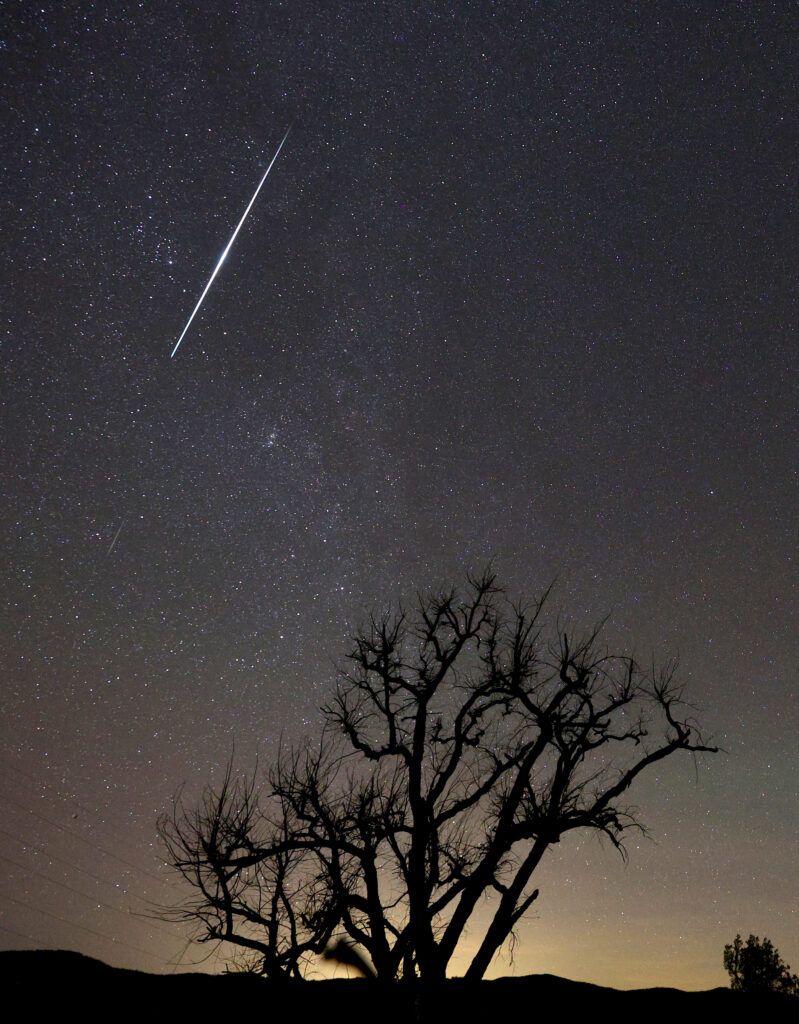
Figure 5. Beautiful image of a bright -5 Geminid on December 15, 2023, at 03:00 UT with the dead cork oak in the foreground. A second faint Geminid is visible below the fireball. Camera: Canon R6ii, Sigma ART 14mm F 2.2, ISO 6400, 6 seconds exposure.
December 14/15, 2023
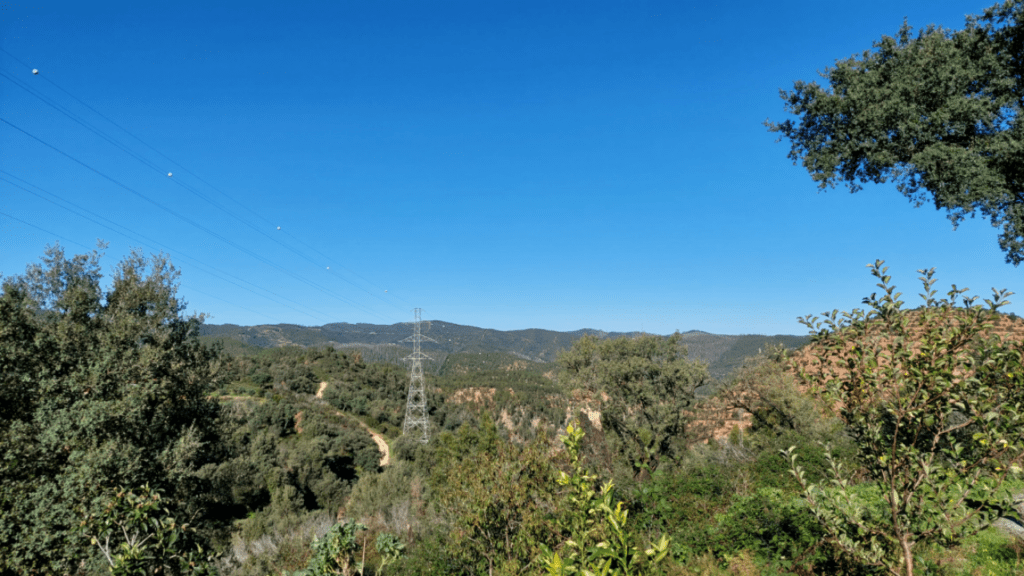
Figure 6. This is how we like it. Bright blue skies on December 14!
With a maximum predicted by IMO on December 14, 19 UT, it is ideal to observe earth grazers. However, caution is required, because if the maximum falls a few hours later (which often happens when a double maximum occurs), we will be in a dip and things could easily be disappointing. The Geminids radiant appears just after 18:30 UT above the horizon. Everything is ready and the cameras started making pictures around that time. This night Koen used his Sony Alpha AIIs camera with a Sigma ART 20 mm F 1.4 lens. He starts his visual observations because of the early time next to the house (because of the streetlight on the tree), which is at 18:40 UT. There is still a little bit of twilight, but the limiting magnitude is already around 6.5. The transparency/contrast of the starry sky is excellent. It takes five minutes before the first earth grazer, a +1 Geminid, appears, low in a north-northeast direction, disappearing as seen from our vantage point behind a tree. Yes, there they are again! And so more appear. Koen observes for 80 minutes and counted 24 Geminids: sometimes several in a few minutes, sometimes nothing to be seen for 5 or 6 minutes. The brightest earth grazers are the most beautiful: you can see them slowing down, fall apart or just dissolve. Very beautiful view to see! The cameras also captured a number of earth grazers.
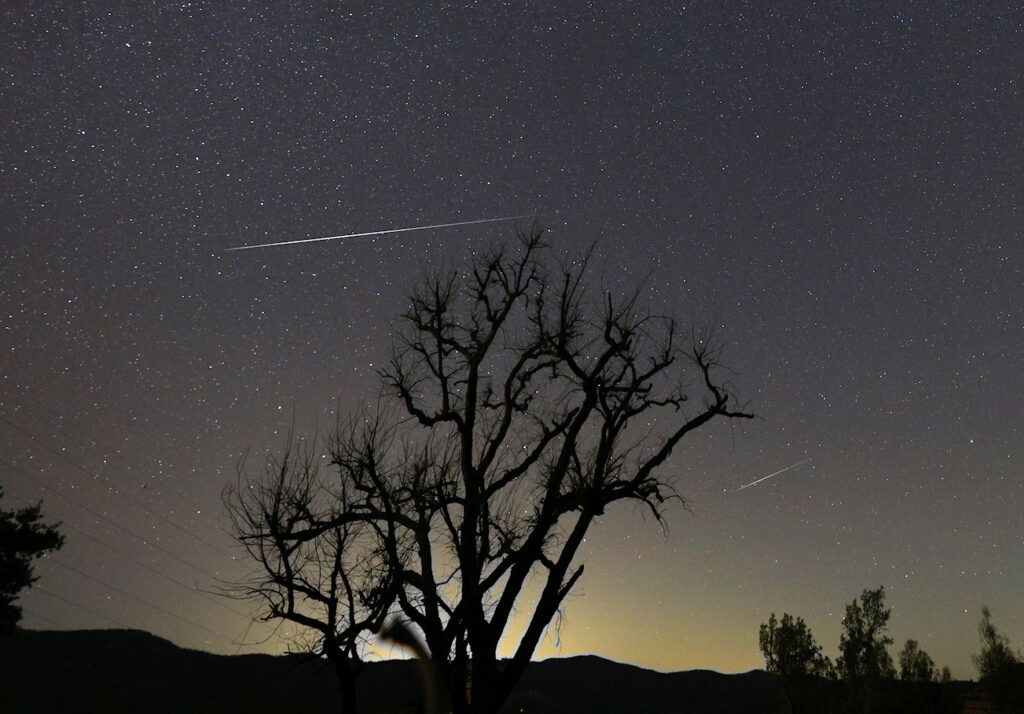
Figure 7. Two Geminid earth grazers in one 6 second shot! December 14, 2023 20:49 UT. Canon R6ii, Sigma Art 14mm F 2.0 (ISO 6400, 6 seconds).
Koen takes a break between 20:10 and 20:57 UT: some coffee and fruit are consumed. Unfortunately, the streetlight still appears to be on after this, so he continues observing from the spot next to the house. The Geminids activity has increased, obviously due to the climbing radiant. But not many bright Geminids. Just before 22:00 UT the streetlight appears to be off and Koen quickly moved to the street. At 22:15 UT restart with an unobstructed view and a limiting magnitude well above 6.6. After 1 minute, Koen sees the most beautiful Geminid of this campaign. A -3 Geminid moves low above the eastern horizon, and it had a wake (tail) that moved like a flame in a strong wind. Rarely have seen this so beautiful. Shortly afterwards a -2 Geminid: ah, would we now get the nice bright stuff? Well, no, but more -1 and -2 Geminids appeared. But actually, it was never convincing in terms of numbers of bright Geminids. The number of Geminids per hour were good with maximum hourly counts near 100 around radiant culmination (~02:45 UT). However, after 3:30 UT there was a rapid decline in numbers, which halved in a short while. Fortunately, the number of bright Geminids increased somewhat, so at 02:45 UT a -4 Geminid, 02:47 UT a -3, -1 and +1 Geminid were simultaneously seen and at 03:00 UT a -5 Geminid (see figure 5). At 05:25 UT: another -5 Geminid, this one diving “into” the tree to the east and emerging again underneath! Some short flashes of light are visible from behind the tree. All in all, we got the impression that the decreasing mean brightness of the Geminids was not as convincing as for example in 2007 (also from Portugal). Anyway, final calculations together with data from other visual observers should provide much more details about this. And of course, we do not really know what has appeared behind the trees and mountain. Koen observed this night between 18:40 and 05:30 UT, which is almost 11 hours, but due to some longer breaks, the net observing time was 8.85 hours: it yielded 632 meteors.
Jaap lets his cameras run until dusk and then goes to bed. In 11 hours, 220 meteors were photographed with the 14mm. The 24mm captured 105 meteors in 9 hours.
December 15/16, 2023
The last night in Umbria would also be a clear one. Due to the two long previous nights, the start is now later again. Jaap only uses a Canon R6ii with the 14 mm. Koen did one single visual session between 23:17 and 03:17 UT. Wow! What a peace at the firmament: The Geminids only show up sporadically with a maximum hourly count of 9. In the last hour, this value halved again. Koen counted a total of 96 meteors in 4.00 hours. Jaap’s 14mm was no longer as busy as the night before; 34 meteors in 10.5 hours.
In the evening of December 16th, we flew back to Schiphol. We look back on a highly successful campaign. It is just a pity that we didn’t see the Betelgeuse cover.

